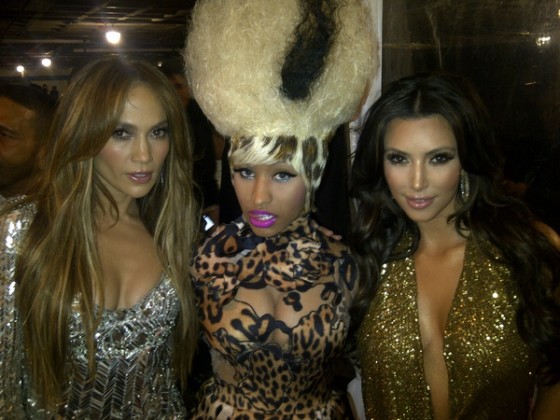There has never been a year where a woman’s bottom has been more highlighted in pop culture.
I am a curvy girl, and most of the time I’m fine with it. I was the kid who let the ball pass by on the soccer field, only to look up from my nails after a chorus of angered teammates would shout my name. That girl hiding behind the tree during the mile test in PE: Yep, that was me. Hey, didn’t I see you at the sunrise hike on Saturday? No, that was definitely not me.
But Team Curvy is looking mighty fine these days, with teammates like Nicki Minaj, Kim Kardashian, Jennifer Lopez, and a society that seems to be worshipping at the altar of booty. It looks like this one goes to the girls with a little extra junk in the trunk.
When Lopez came into pop culture, right around the beginning of the new millennium, those hot spicy new dances emphasized one of her major assets—her ass. She unknowingly shocked a society that had basically been seeing the same stick-thin body type, copied and pasted into every major entertainment outlet since the end of Marilyn Monroe’s era.
Since the year 2000, a lot has changed and new curvy women have hit the scene. Along with killing it in magazines—like Kim Kardashian on the cover of Vogue—curvy girls are dominating the airwaves. There are two booty anthems on the Billboard top 20 this week: “Anaconda” by Nicki Minaj at number 5, and “All About That Bass” by Meghan Trainor topping the charts at number one.
With so much emphasis on the butt, it’s no surprise that it’s become something people look for in a sexual relationship. The Center for Disease Control and Prevention reports that 44% of straight men and 36% of straight women say they have had anal sex. Along with an academic study done by the Journal of Sexual Medicine, which found that 51% of men and 43% of women who’ve had anal sex have also participated “in oral-anal sex, manual-anal sex, or anal sex toy use.”
Now compare those numbers to the national sex survey done by the Journal of Sexual Medicine. In 1992, the highest percentage of women in any age group who admitted to anal sex was 33. Then in 2002, it was 35%. Now the number has risen to 46%, just 4% shy of half the population.
This has truly been the year of the booty. There has never been a year where a woman’s bottom has been more highlighted in pop culture. There have even been new words created to help describe aspects of the movement. Kim Kardashian introduced the word “belfie,” meaning butt-selfie to describe the many Instagram pictures she takes that focus on her backside.
Thanks to the bootylicious revolution we’ve seen more diverse body types in all media, but there are certain cons to the movement. For example, since 2000, butt augmentation surgeries have risen 80%, according to the American Society of Plastic Surgeons. Out of that 80% increase, 15% can be attributed to this year alone.
With statistics like that it’s clear to see why some experts are apprehensive about this new trend.
“We’re just trading one unattainable body type for another,” said Pepperdine University psychology professor Dr. Jennifer Harriger, who specializes in body image. “Hourglass figures with tiny waists and ample curves is not realistic for most women.”
The CDC reports that the average American woman is 5-foot-3, and weighs 166 pounds. That’s a far cry from what we typically see in magazines.
So while I can understand the hesitation that experts such as Dr. Harriger experience with this trend, I honestly can’t help but feel pretty freaking excited. As a curvy girl, growing up in a society that seemed to praise only one body type really sucked.
“When I came out to L.A. from the Bronx and started pursuing my career as a dancer, as an actress, as a performer and singer, I realized that I was different,” Jennifer Lopez has said. “I was Latina first of all…and then my body wasn’t traditional. I was bottom-heavy, small on the top—I had thick thighs and people criticized me. Now booty is in fashion, finally, but before it was just, ‘You’re heavy.’”
A decade ago, I could barely list anyone besides Lopez in mainstream media that was thick, curvy, and considered a representation of beauty in our society. I love that when I am standing in line at the grocery store, I can look to my left, and see a magazine featuring a woman who I can, on some level, identify with physically.
“To focus on this curvy ideal is just replacing one unrealistic ideal with another,” Harriger said. “We should focus on all women being beautiful, and see and appreciate all of these different bodies. That’s what’s really important.”
Sydnie Parker is a Junior at Pepperdine University in Malibu, California, completing a degree in Journalism.
Related Links:

